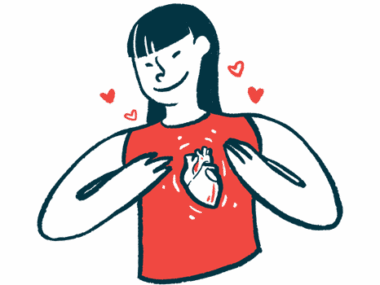How I navigated my 2nd pregnancy as a carrier of PFIC type 3
I had a strategy to respond to intrahepatic cholestasis of pregnancy
Written by |

This week I had an appointment with a new doctor to check on my health following my experience with intrahepatic cholestasis of pregnancy (ICP), a liver disorder. It got me thinking: What’s harder to explain than a rare disease? Explaining that you’re a symptomatic carrier of a rare disease!
My health was first affected by a genetic mutation of the ABCB4 gene at the age of 16, when I developed gallstones. In fact, problems with my own health helped us piece together the puzzle of my daughter Eva’s liver disease, resulting in her diagnosis of progressive familial intrahepatic cholestasis type 3 (PFIC3). Eva has two genetic mutations that cause her to have the disease, whereas I have only one, meaning I’m a carrier.
The literature on the impact of being a carrier of PFIC3 is few and far between. Plus, our genetic counselor said they’d never seen my genetic mutation before.
Careful monitoring and a good care strategy
During my pregnancy with Eva, I had severe ICP, caused by the genetic mutation. My bile acid blood levels were very high, resulting in the characteristic insatiable itching, stomach pain, and inexplicable fatigue. Thanks to Eva’s diagnosis, going into my second pregnancy, we were aware that I had an underlying liver problem and that I’d almost definitely have ICP again. My doctors made a plan to deliver the baby via cesarean section when I was 32 weeks pregnant to minimize the risk of stillbirth. It was worrying knowing that I’d have the baby prematurely at a hospital that was a three-hour round trip from our home, where Eva was.
Early on in the pregnancy, I started taking ursodeoxycholic acid, the same medication that Eva takes to treat PFIC. It was nice that we could joke about Mummy and Eva’s matching medicines. During my second pregnancy, the insatiable itch made me feel particularly sad, because I knew that as Eva’s disease progresses, itching will become more and more distressing for her, too.
At around 18 weeks of the pregnancy, I started to feel very unwell due to ICP. I realized that going to work would be a real challenge. I’m lucky to have a job with fantastic workers’ rights, so I was able to take a few months off to rest and focus on growing the baby.
My pregnancy was heavily monitored. I spent one day a week at the hospital for a full day of scans and tests. As time went on, we noticed that my strategy of getting lots of rest, exercising gently, and taking medication early on in the pregnancy was keeping my bile acids at a moderately high level, rather than a severely high level.
The 32 weeks of pregnancy soon came around, and the doctors decided to let me go another week before delivering the baby. This continued for a few more weeks, and I was delighted to make it to 36 weeks before being induced and delivering our second daughter, Rosalie. (My husband, Justin, didn’t make it to the hospital in time for the delivery — something I won’t let him forget!)
After my second occurrence of ICP, I contacted the PFIC Advocacy and Resource Network and asked if they could list ICP as a symptom of being a PFIC3 carrier. I’m so glad they did, as my own experience made me realize how important early diagnosis and management of the pregnancy are.
Although being a carrier of PFIC has fewer health implications than having the disease, it can still be serious, including an unquantified increased risk of liver cancer. We’re so grateful to have had access to in vitro fertilization with preimplantation genetic testing, and to know that our second daughter not only doesn’t have the PFIC gene, but she also isn’t even a carrier of the disease.
Although I still have some underlying issues with bile (I’ll spare you the grizzly details), the impact is relatively minor, and in some ways I’m looking forward to returning to work when my maternity leave comes to an end. I appreciate how lucky I am to have the option of going to work while Eva thrives at the nursery.
Note: Liver Disease News is strictly a news and information website about the disease. It does not provide medical advice, diagnosis, or treatment. This content is not intended to be a substitute for professional medical advice, diagnosis, or treatment. Always seek the advice of your physician or other qualified health provider with any questions you may have regarding a medical condition. Never disregard professional medical advice or delay in seeking it because of something you have read on this website. The opinions expressed in this column are not those of Liver Disease News or its parent company, Bionews, and are intended to spark discussion about issues pertaining to liver disease.









Leave a comment
Fill in the required fields to post. Your email address will not be published.